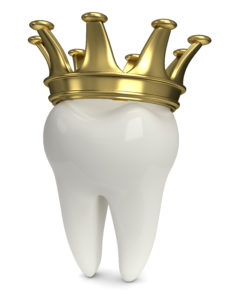 The crowning of royalty is as ancient as the history of civilized societies. But whereas it has been a symbolic image for a governing body to convey its power, when it comes to your tooth, the crown serves a very important function. It is the main structure that rises from the gums and contains precious cargo – the inner tooth area, where the pulp and nerves are housed. But sometimes it gets damaged from tooth decay or from trauma. When this happens, something must be done to rectify the situation – you’ll need a new crown from your dentist in Brookfield. As you continue exploring, you’ll learn more about how this process works and how to determine when you need one.
The crowning of royalty is as ancient as the history of civilized societies. But whereas it has been a symbolic image for a governing body to convey its power, when it comes to your tooth, the crown serves a very important function. It is the main structure that rises from the gums and contains precious cargo – the inner tooth area, where the pulp and nerves are housed. But sometimes it gets damaged from tooth decay or from trauma. When this happens, something must be done to rectify the situation – you’ll need a new crown from your dentist in Brookfield. As you continue exploring, you’ll learn more about how this process works and how to determine when you need one.
How to Determine that You Need a Crown
There are several situations that could warrant the need of a new crown. They include:
- A Break – Your crown can break from sudden trauma during a sporting event or from eating something that is too hard like ice.
- Severe Tooth Decay – If you have severe tooth decay that warrants a root canal and has worn down your original material, you will need a replacement crown.
- Tooth Loss – An obvious need for a new crown is when you have suffered the loss of one or more teeth in a non-consecutive pattern.
How are Your Replacement Crowns Made?
Your new crowns will be made from either:
- All metal
- Zirconia
- Porcelain fused with metal (PFM)
- Porcelain with zirconia
- All ceramic
The metals contain gold alloys (palladium) or a base-metal alloy (nickel or chromium). The PFM crowns are considered to be stronger and better choices for back teeth. Along with all-ceramic crowns, they are the same color as your natural teeth.
Your dentist will advise as to which option is better based on your specific needs. Cared for properly, your new crowns can last between seven and 40 years.
How the Dental Crowns of Brookfield Process Works
The process of getting a new crown happens in steps:
- Post Root Canal – If you’ve had a root canal, the first step to getting your crown will be for your dentist to insert a post-and-core foundation.
- Filing Your Tooth – Your tooth will be filed down to prepare it for the new crown, and then impressions will be made so that your permanent fixture can be fabricated at a lab.
- Temporary Placement – While your permanent crown is being crafted, your dentist will install a temporary one to protect your teeth, but it’s important to remember that it’s not intended to last any longer than a year.
- Permanent Crown Placement – When your permanent crown is ready, you will return to your local dentist to have it installed.
After your permanent fixture is placed, you can expect to have some immediate sensitivity to cold temperatures, but that should subside soon. In just a few days, you will be able to return to the life of royalty that you once knew, your crown intact.
About the Author
Dr. Brandon A. Brunner received his undergraduate degree from the University of Wisconsin-Madison. He then went on to earn his dental degree from the University of Minnesota. With a focus on endodontics and oral surgery, Dr. Brunner practices at Elmbrook Family Dental, S.C. and can be reached for more information through his website.
